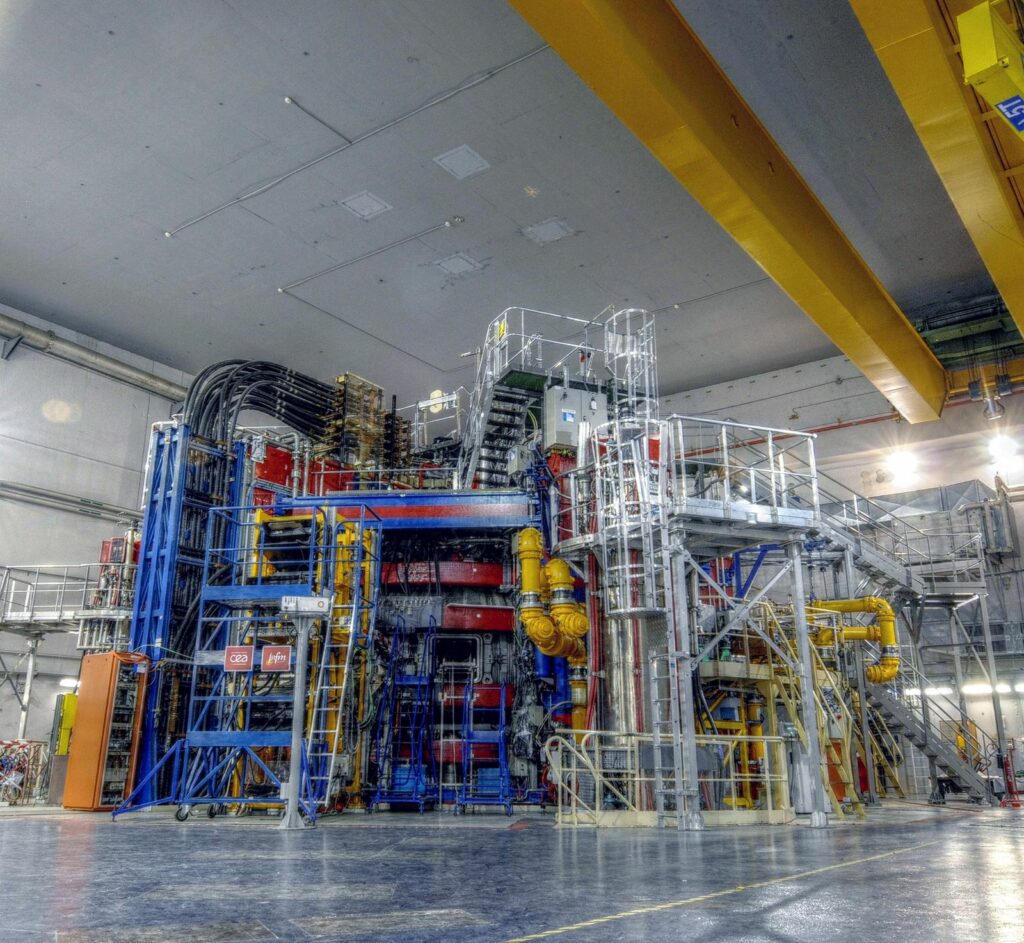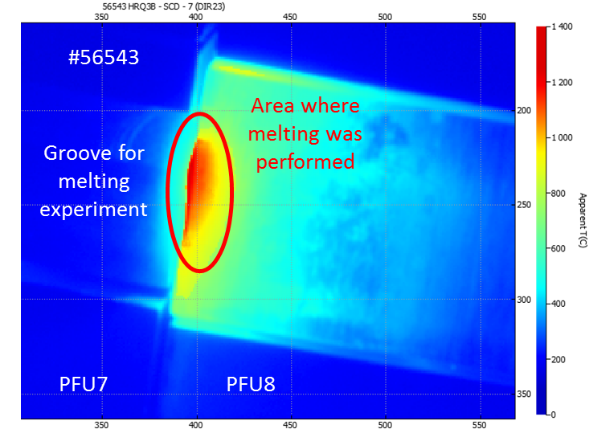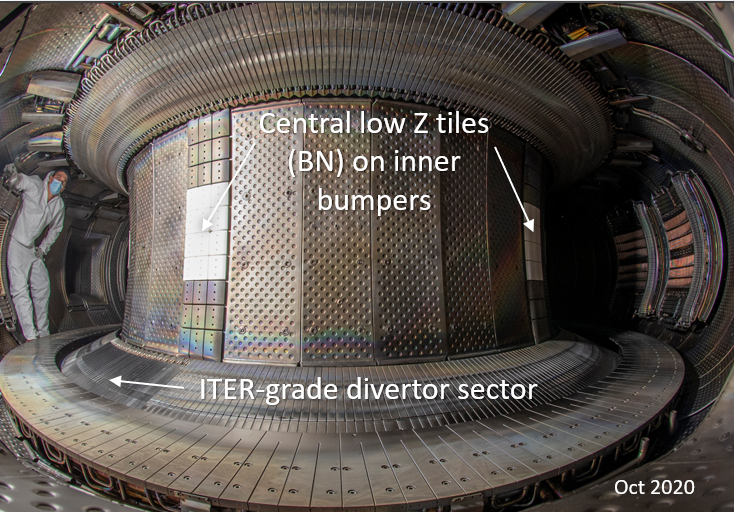Full metal tokamak
Due to its high melting point, the dense metal called tungsten (symbol W) is the material of choice for the wall sections in a fusion reactor that have to withstand direct contact with the hot fusion fuel or plasma. Even at its edge, this charged hydrogen gas can reach temperatures of tens of thousands degrees Celsius. The international fusion experiment ITER will use tungsten for its heat exhaust (divertor), and so scientists are eager to study ahead of time how this metal will interact with the hot fusion fuel in ITER.
The French tokamak WEST – 3 kilometers south-west of the ITER building site in southern France – has been turned into a tungsten testing environment. “We want to see how tungsten will hold up for its planned 10 years of operation in ITER”, explains EUROfusion task force leader Emmanuelle Tsitrone. “That means installing ITER-grade, cooled-tungsten divertor prototypes in WEST to investigate how they behave in the harsh environment of a tokamak.”
For its current experimental campaign, WEST has been outfitted with two ITER-grade tungsten divertor sectors out of twelve, or 76 out of 456 planned divertor components; the rest will follow in 2021, and will allow carrying out truly long-exposure experiments.

Melting tests
At the end of 2020, the WEST team completed six EUROfusion experimental sessions, including melting tests. “Imagine what happens when one of the tungsten blocks sticks out above its neighbours”, the physicist sketches: “it will face the full brunt of the plasma! We manufactured grooves to simulate just that and see how big the effect would be.” The measurements will now be fed into computer models that can translate WEST results into predictions for the plasmas of the much larger and hotter ITER tokamak.

An eye to the future: full tungsten DEMO
Tungsten may be the ideal material for the heavily-tasked tokamak exhaust system, but it has its disadvantages. Even in the 150-million-degree heart of a fusion plasma, tungsten does not fully ionise. That means it can absorb heat and radiate it away in the form of X-rays, completely bypassing the tokamak’s magnetic cage that is supposed to keep the heat in. Also, a tungsten ion upsets the charge balance in the plasma, pushing away many hydrogen ions to compensate and diluting the hydrogen fuel.
Effectively, if tungsten erodes, it can poison the plasma. It is therefore important to identify the main sources of tungsten erosion in the vacuum vessel and how they end up in the heart of the plasma cloud, where even small amounts of tungsten can lead to huge heat losses. Figuring this out is particularly important for the future European demonstration power plant DEMO, which will use a full tungsten wall.
“In order to pinpoint the main tungsten sources in WEST, we intentionally replaced tungsten on the start-up limiters by a much lighter material, boron-nitride”, says Tsitrone. Limiters sit on the tokamak’s sidewalls and act as ‘bumpers’ that the plasma can safely rest against during start-up. If the amount of tungsten eroded with these bumpers in place differs from all-tungsten operation, the researchers can deduce where part of it originates from.

Tsitrone is relieved the campaign was completed in time, although the team had to work double shifts to complete all the planned WEST experiments before the end of the year – and the end of the seven-year European science programme Horizon 2020 during which they were planned. Indeed, the experimental campaign started at the end of November 2020 after a two-month delay due to the COVID pandemic, leaving very little time to perform the EUROfusion sessions. Dedicated Skype channels kept everyone in the loop, whether in the control room or working remotely due to corona-virus restrictions. “Despite having to connect remotely with scientific coordinators from Germany or Belgium, we managed to deliver all six planned EUROfusion experimental sessions. A tremendous achievement by our operators and scientists!”
